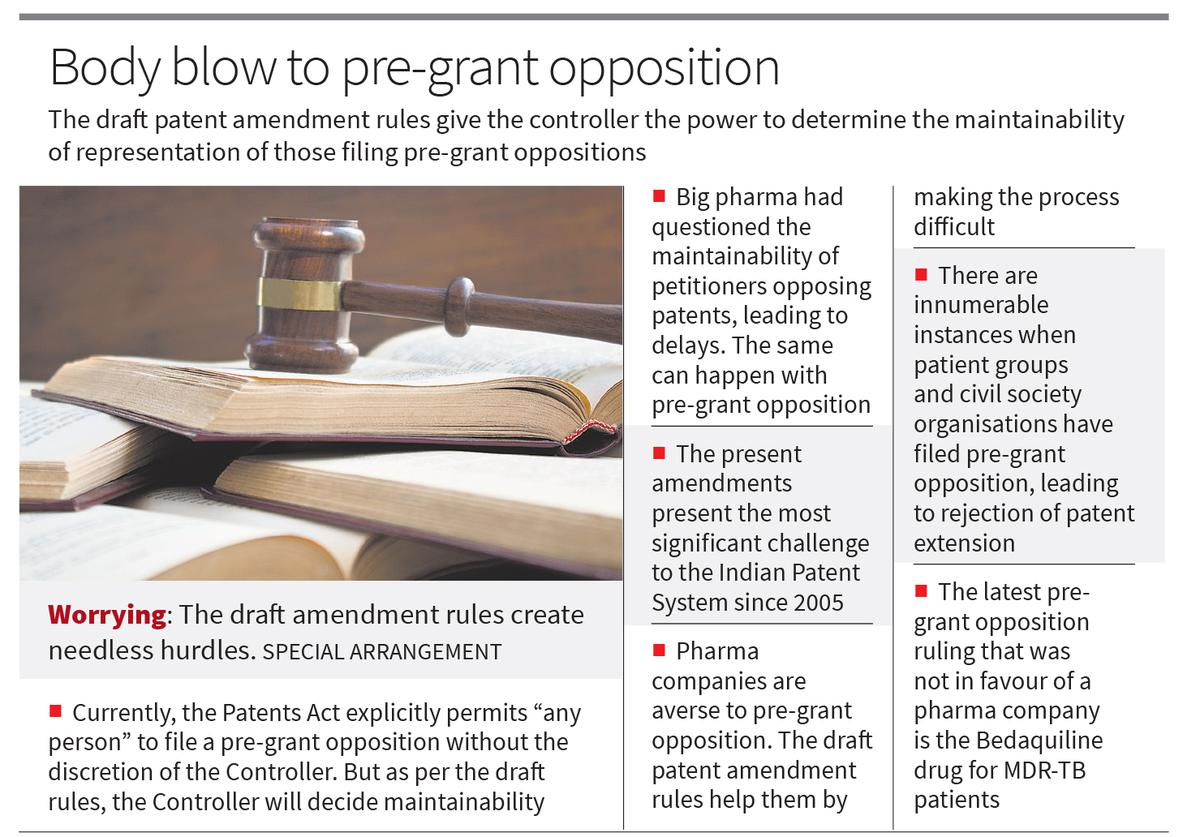From UPSC perspective, the following things are important :
Prelims level: Patent regime
Mains level: bright-line rules to simplify decision-making in the Indian Patent Office

Central idea
Madras High Court’s recent rulings on pharmaceutical patents clarify Section 3(e) and Section 3(i) exclusions, emphasizing evidence and contextual analysis for patent eligibility. The decisions highlight the necessity of bright-line rules for consistency in patent office decisions and suggest a legislative role in addressing gaps in pharmaceutical patent issues.
Key Highlights:
- Recent Madras High Court judgments by Justice Senthilkumar Ramamoorthy bring clarity to pharmaceutical patent exclusions in the Indian context.
- The first case, Novozymes vs Assistant Controller of Patents, interprets Section 3(e), excluding compositions that are mere aggregations. The court specifies that known aggregates can still be patent-eligible if individual components meet patent criteria.
- The second case, Hong Kong and Shanghai University vs Assistant Controller of Patents, deals with Section 3(i), excluding inventions related to the treatment of humans or animals. The court provides insights into the types of diagnoses excluded under this provision.
Key Challenges:
- Lack of bright-line rules in the interpretation of patent exclusions, leaving room for ambiguity and varied decisions.
- Balancing the interests of pharmaceutical innovation, public health, and preventing overbroad monopolies poses a challenge for the courts.
- The need for more legislative clarity on exclusions, with suggestions for in vitro process considerations and potential compulsory licensing.
Key Terms and Phrases:
- Section 3(e): Exclusion related to compositions that amount to a mere aggregation of components.
- Section 3(i): Exclusion pertaining to inventions involving processes for the treatment of humans or animals.
- Bright-line rules: Clear and specific guidelines for interpreting patent exclusions, ensuring consistency in decision-making.
Key Quotes and Statements:
- “Bright-line rules are very critical in the realm of pharmaceutical patents to provide consistency and certainty in decision-making.”
- “The court’s insistence on producing evidence to demonstrate the synergistic properties of compositions is a welcome move for clarifying the scope of Section 3(e).”
- “Courts need to be conscious of competing interests in pharmaceutical and medical patents, finding a robust balance point for all parties.”
Way Forward:
- Advocate for the formulation of bright-line rules to simplify decision-making in the Indian Patent Office.
- Encourage legislative consideration for in vitro processes, accompanied by provisions for compulsory licensing.
- Emphasize the importance of courts balancing socio-economic conditions and public health concerns in interpreting patent law provisions.
Get an IAS/IPS ranker as your 1: 1 personal mentor for UPSC 2024
